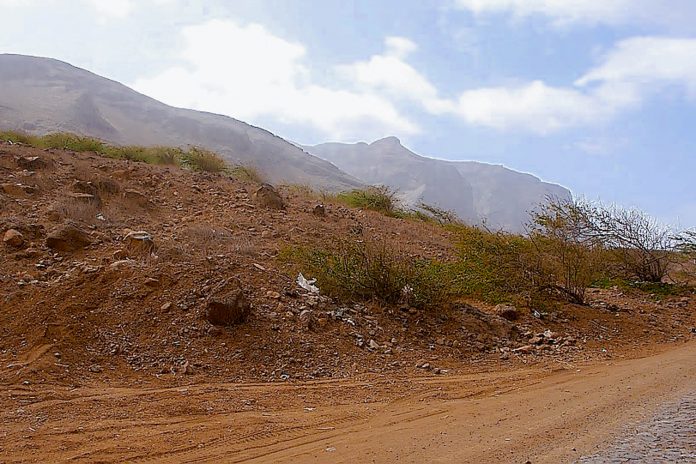São Nicolau auf den Kap Verden ist die perfekte Insel zum Wandern und Mountainbiken. Üppige Natur, steile Hänge und fantastische Felsformationen sind zu entdecken. Baden kann man an den felsigen Küsten allerdings kaum.
Naturfreunde und Sportbegeisterte werden sich auf São Nicolau, im mittleren Norden der Kap Verden, pudelwohl fühlen. Die Berge sind nicht ganz so hoch, die Schluchten nicht ganz so tief und die Wege damit nicht ganz so anstrengend wie auf der klassischen Wanderinsel Santo Antão. Dafür ist auch die Infrastruktur noch nicht so gut ausgeprägt.
Der Nordwesten ist der fruchtbarste Teil der Insel. Hier reckt der Monte Gordo, der höchste Berg der Insel, seinen Gipfel 1.300 Meter über den Meeresspiegel. Im Süden und Osten ist es eher trocken und bis auf einige wenige, teils verlassene Dörfer gibt es kaum Siedlungen. Die ehemaligen Maultierpfade sind ideal für Wüstenwanderungen auf die windigen Gipfel des Tope de Chuva, Tope Simão oder Cruz de Pedra.
Inhaltsverzeichnis
Hauptstadt Ribeira Brava

Die sympathische kleine Hauptstadt Ribeira Brava („Wilder Fluss“) duckt sich im Zentrum von São Nicolau in die samtgrünen Hänge einer eindrucksvollen Berglandschaft.
Die farbenfrohen Häuser in den verschiedensten Pastelltönen gruppieren sich um den Praça do Torreiro. Der zentrale Platz wird von der prächtigen, blau getünchten Igreja Matriz de Nossa Senhora do Rosário dominiert. Als ehemaliger Bischofssitz war sie im 19. Jahrhundert die größte Kirche in Westafrika.
Über eine Seitenstraße gelangt man zur Markthalle, in der Fisch, Fleisch, Obst, Gemüse und Kleidung verkauft werden.
Im Stadtteil São João etwa 200m flussaufwärts stehen noch heute neben schmucken Häusern traditionelle Häuser aus Naturstein mit Strohdächern. Hier liegt auch das ehemalige Priesterseminar Seminário de São José. Als São Nicolau 1780 zum Bischofssitz der Kap Verden auserkoren wurde, wurden die zukünftigen Priester vor Ort auf ihr Amt vorbereitet.
1931 wurde das Seminar jedoch in ein Gefängnis für politische Straftäter umfunktioniert, nachdem der Bischofssitz nach São Vicente verlegt wurde. Neben dem Gebäude steht heute noch eine kleine Kapelle, über der das imposante Cruzeiro de Penedo aus dem Felsen ragt.
Am quirligsten ist Ribeira Brava am Morgen, wenn Türen und Fenster geöffnet werden und reger Handel betrieben wird. Nachdem man das geschäftige Leben in der Hauptstadt erlebt hat, empfiehlt sich der Stadtpark am Flussufer zum Entspannen. Hier kann man sich auf einer Bank im Schatten eines Baumes niederlassen und Ribeira Brava in aller Ruhe genießen.
Tipp: Nach starken Regenfällen macht Ribeira Brava seinem Namen alle Ehre. Dann wälzen sich tosende Wassermassen durch die Stadt. Viele der Straßen werden überschwemmt und man bleibt am besten wo man ist, bis sich das Wetter wieder beruhigt hat.
Südlich von Ribeira Brava liegt das eher ärmlich wirkende Dorf Preguçia direkt an der steil abfallenden Küste. Früher Handelshafen und Walfangstation verströmt es heute einen altertümlichen Charme.
Tarrafal
Auch auf São Nicolau gibt es einen Ort namens Tarrafal, wie schon auf Santo Antão und Santiago. Tarrafal auf São Nicolau liegt 26km nordwestlich der Hauptstadt Ribeira Brava und hat mittlerweile schon mehr Einwohner als die Hauptstadt.
Die Strecke von Ribeira Brava nach Tarrafal ist landschaftlich wunderschön und unbedingt zu empfehlen. Die gepflasterte Straße führt durch das grüne, weite Tal von Fajã mit niedlichen Ortschaften, Obst- und Gemüsefeldern und zahlreichen Wanderwegen. Von der Kapelle Nossa Senhora do Monte Sentinha offenbart sich ein traumhafter Blick auf den meist wolkenverhangenen Gipfel des Monte Gordo und in das Tal von Ribeira Brava.
Tipp: Auf dem Weg nach Tarrafal empfiehlt sich ein kurzer Abstecher zur Küste im Tal von Queimadas. Hier gibt es das „Blaue Loch“ zu entdecken, ein faszinierender Durchbruch im Felsen, der malerisch von den Wellen umspült wird.
Hafen und Strand von Tarrafal
Tarrafal beherbergt den größten Hafen von São Nicolau und ist einer der wenigen Orte der Insel, wo Badeurlauber auf ihrer Kosten kommen. Am Praia da Luz, einem breiten Strand mit heißem, schwarzem Lavasand im Norden von Tarrafal, ist das Meer ruhig und angenehm. Der schwarze Sand soll außerdem durch seine Titan- und Jodeinschlüsse gegen Gelenksschmerzen und Rheuma helfen. Auch Hochseefischer und Wassersportler fühlen sich hier wohl.
Etwa 4km weiter ragt der winzige Solar-Leuchtturm von Barril aus dem glühenden Sand. Dahinter führt eine Piste um die Westspitze von São Nicolau bis in den Norden nach Praia Branca. Das Örtchen liegt eingebettet zwischen Tope Moca, Tope Matin und Topana, die wunderbar idyllische Wanderwege bieten. Nach Praia Branca führt die Straße noch weiter bis Ribeira da Prata an der Nordküste, dann heißt es Umdrehen.
Besteigung des Monte Gordo
Der Gipfel des höchsten Berges von São Nicolau lockt mit einem grandiosen Panorama. Ausgangspunkt für den Aufstieg ist das Örtchen Cachaço an der Hauptstraße zwischen Ribeira Brava und Tarrafal. Auf der mit „Perímetro Florestal“ ausgeschilderten Forststraße geht es bergauf, vorbei an Drachenbäumen in den immer dichter werdenden Wald.
Am höchsten Punkt der Straße muss das Auto stehen gelassen werden, über einen steilen Weg geht es zu Fuß weiter. Nach gut einer Stunde ist man am Gipfel angelangt. Bei exzellenter Fernsicht kann man jede einzelne Insel der Kap Verden sehen – einzigartig auf dem gesamten Archipel.
Tipp: Die Wanderung auf den Monte Gordo dauert zweieinhalb Stunden und überwindet 600m Höhendifferenz. Gute Kondition, Trittsicherheit, Wanderstiefel und mindestens drei Liter Trinkwasser sind zu empfehlen.





